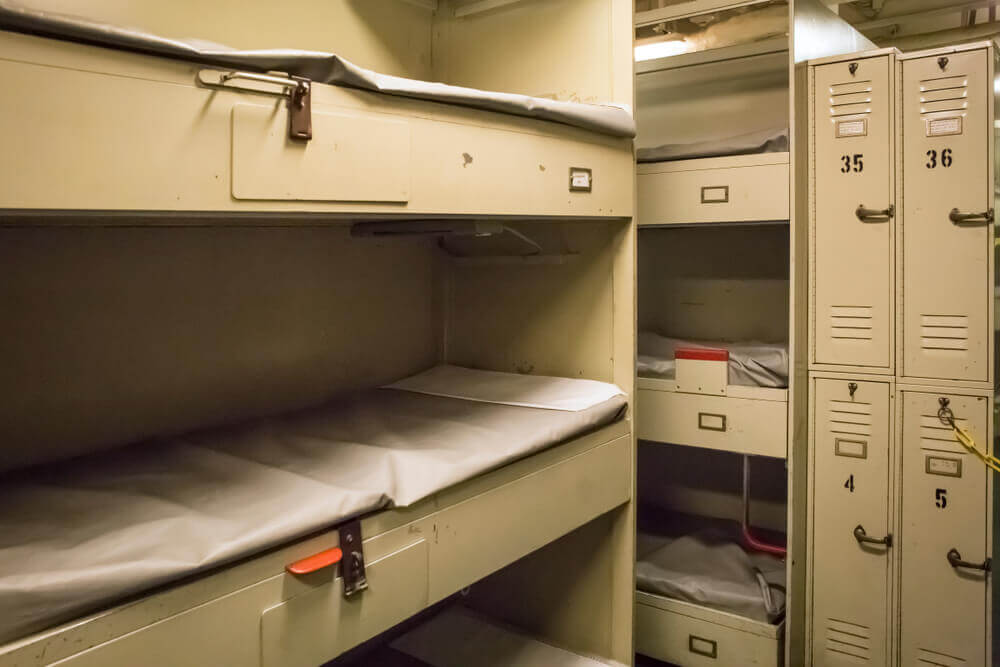The workplace as we know it is changing. Gone are the days of showing up with a leather briefcase and spending the day cooped up in a cubicle. Today’s workplace now has smart platforms for everyday office operations. These advancements have also made it possible to change how the human resource is managed.
To begin with, traditional enclosed setups have given way to open offices. You now come across concepts such as hotelling, coworking, and hot desking. With this comes a more relaxed approach to sharing available floor space. So, why is not having designated work stations becoming so popular? Here’s what you need to know about hot desking.
What is Hot Desking?

Hot desking is a workplace organization system where multiple workers use a single workstation at different times. Here, ‘workstation’ can refer to a desk, cubicle, or any such work surface.
Without permanent occupancy, hot desking allows a small workplace to accommodate a much larger workforce. The system can house contract workers, support staff, and anyone else not required to work in a dedicated area.
As opposed to assigning a desk to each employee, hot desking saves cost on office space. The system can be highly valuable, especially in big cities where real estate is costly. While cost is the major factor behind the system, hot desking also fosters productivity- especially where work is done in shifts.
The History of Hot Desking
Hot desking is not a new concept but rather the adoption of a naval practice known as hot racking. The practice originated in the sixteen century as a way of utilizing bunks in ships. Low ranking crew members are required to share bunks/beds as they work in rotating shifts.

The system also goes by the slang hot bunking or hot bedding. ‘Hot’ in this case signifies that the vacating member leaves the bed warm for the next occupant. Nowadays, hot racking is utilized by submarine crews, where space has to be maximized for efficiency. In the business world, hot desking arose sometime in the 1990s.
It originated from entrepreneurial hotbed centers such as London, Boston, and Shanghai. The practice was then common amongst large corporations where staff worked shifts round the clock. Hot desking is now commonplace in offices where individual workstations are unnecessary or avoidable.
Benefits of Hot Desking
Like any other business undertaking, it pays to weigh the benefits of hot desking – for both the employer and the employees. So, what makes this form of workplace popular?
Cost-Effective
Research shows an up to 30% decrease in the cost of running an office after the adoption of hot desking. Transitioning from cellular offices to an open plan layout effectively reduces the square footage needed. Downsizing on space can also reduce the need for additional staff such as messengers and secretaries.
Perfect for the Modern Workplace
The world is changing fast and so is the workplace. Technology has kept up; cloud and remote task management software have become the norm rather than the exception. Hot desking fits directly into this new reality. Freelancing, consulting, sub-contracting, and other such forms of remote working become easier to adopt in a flexible workplace.
Improved Socialization

With remote systems becoming commonplace, face-to-face interactions may reduce. This is despite the fact that person-to-person communication is vital for effective workplace collaboration. A hot desk becomes a platform for workers to ‘collide’ and get to know each other.
As social culture improves, new relations and connections are formed. The system also allows the circulation of knowledge amongst teams and departments. As physical barriers reduce, hot desking can also speed up decision making and increase transparency.
Autonomy and Equality
Enter a traditional workplace, and you can tell the hierarchy from the setup. Having the coveted corner office isn’t wrong; it’s just that the current workforce is more responsive to a neutral and ‘boss free’ environment. In this terms, hot desks make your company a truly ‘open door policy’ workplace.
Non-permanent workplaces also allow some level of autonomy. Not being tied to a specific desk gives you the freedom to change your day-to-day work environment; For example, today you can sit by the window, and tomorrow by the entrance.
Tidier Workplaces
Have you ever wondered how neat the office would be without personal clutter? It’s not uncommon to find toys, plants, trophies, and photos all over the workplace. Granted, some personal touch is good for your morale but not so for your fellow workmates. Once you remove individual desks, uniformity can take over.
According to research published by The Journal of Neuroscience, a tidy workplace fosters productivity. The study by Princeton University suggested that multiple stimuli within your visual field hinder your concentration. Simply put, too much clutter stresses out people and makes them more distracted.
Things to Consider Before Adopting Hot Desking
Before you steer your organization towards hot desking, there are a few things to consider. As a manager or business owner, adopting the scheme successfully goes beyond issuing a memo.
Transitioning requires changes in employee attitudes, floor space setup, and much more. To avoid hot desking drawbacks, here are some things to consider:
Office Space
As one of the main driving factors, office space needs to be on top of your list. For example, minimizing the floor space underuse might call for the creation of shifts. In other cases, you may have to co-rent workstations with other organizations. There are also work bars in operations around major business centers.
Work bars are shared office workplaces where you can pop in and work at a small fee. At Circle Hub, we offer such facilities without the need for long term commitments. You can get workspaces ranging from lounges, personal desks, private luxury offices, or shared community spaces. Known as Hot Spots, the workstations come with high-speed internet, complimentary beverages, and other amenities.

Telecommunication
Communication is vital to any company. Now that anyone can sit at any station during their shift, how will you reach specific staff? As with modern workplace concepts, hot desking may have to go hand in hand with working from home; how will you coordinate?
Among the many solutions is setting up Skype and Google numbers for staff. You may also have to group members according to shifts for ease of communication. An even better option would be to install a Private Branch Exchange (PBX)- a private telephone network that connects you to any member’s phone.
Technology
Without permanent workstations, you may have to adjust some technology logistics. Questions to ask yourself include:
- Will the hot desking staff share PCs?
- Will each desk have access to your intranet, and what level of access is needed? Are laptop outlets required?
- Is it the company or individual workers to provide the laptops?
Acceptance
Apart from technology and communication, you have to consider how receptive your workers will be about the whole idea. A flexible work environment may be resisted by some of your staff.
Typically, older workers prefer traditional work environments and might take time to adjust. To them, having personal space is seen as job security. A younger workforce will, however, welcome the idea more readily.
Demographics
Lastly, you have to consider the office’s demographics versus office size. The point here is to ensure hot desking leads to a seamless distribution of workforce.
What’s the amount of full-time staff vs. part-time staff? What type of work does each department handle? Answers to these questions and the amount of available floor space should guide how you implement the system.
How to Manage Hot Desking

After performing due diligence on each of the above points, it’s time to set up hot desks. Here are the main steps to follow;
Step 1: Familiarize your Staff with the Hot Desking Policy
Adopting hot desking will definitely affect the lives of your staff in several ways. It is important to let them see it coming by sharing your policy beforehand. You can do this in a simple document that summarizes the benefits, expected changes, the individuals or departments that will be affected and expected responsibilities.
Furthermore, let your staff know of the structure that the organization will put into place to ensure that the new working arrangement puts their needs into consideration. This can be the provision of enough working stations for all, secure storage for their belongings, relevant tools and resources, and access to meeting rooms among other commitments.
Step 2: Carry out a Pilot and Take Feedback
Once everything is ready, consider test driving the program. This will help you to identify and iron out possible hitches. While at it, gather as much feedback from the staff as possible by encouraging them to give views, propositions, and concerns and to ask questions. When they give feedback, take it into consideration.
This will not only help you to improve your program but will also make your staff feel involved, hence increase your chances of success. Also, it would be a great idea to do the pilot with the department or departments that will be affected most by hot desking.
Step 3: Establish Hot Desking Etiquette
In the regular office, there are etiquette rules written or otherwise, that help you to work in harmony and maintain workplace cohesion. Back to hot desking, you will need to establish this with more emphasis as a good number of people may not exercise responsibility in a place with no permanence.
The etiquette rules should revolve around hygiene, respect of other office users and seamless transition from one user to another. That said, arrange to have the resources such as hand sanitizers, wipes, lockers, etc. to make this successful. While each company may have some customized rules, below are examples of general etiquette rules:
- Leave your station promptly when your shift ends
- Always leave your station clean and tidy
- Don’t leave personal items on or in the desk; keep them in the designated places
- Towards the end of your shift, get rid of personal or confidential files from the computer and log off
- Keep your voice professional and your conversations down especially around other office users
- If you bring food, eat it at the right place and don’t leave leftovers behind
Step 4: Invest in Assistive Technology
If not properly managed, hot desking may turn out to be disruptive, time-wasting and an absolute nightmare. Think of employees trying to find unoccupied desks, looking for the conference room in rented premises or competing for the desk by the window…This can, however, be avoided with the right tools.
Besides providing your employees with the right technology, invest in tools that can help you manage work with ease. These may include desk booking/scheduling, meeting scheduling, and online collaborative tools among others.
Additional Tips to Make Hot Desking Work

Hot desking can be a difficult undertaking, especially for staff not used to the system. Some workers may find sharing workstations invasive to their personal space. Also, with the loss of assigned desks, workers may lower their productivity. At the same time, pooling people together could have the opposite effect, leading to isolation.
As with any company policy, hot desking should ensure cohesion among workmates. To ensure that workers from different departments and teams share the ‘hot desks’ amicably, here are some creative approaches to try;
- For each worker, allow some level of customization for their temporary workstation. While not as personal as photos of family/pets, you can probably allow custom computer backgrounds and screensavers.
- To combat isolationism, hold regular conferences. Even when done via video conferencing, talking to each other promotes teamwork and cohesion. Holding team building exercises outside the office is also advisable. You can also try get-togethers for improved socialization.
- When hot desking is introduced as a separate department, the involved workers may feel even more isolated. To help in ironing out any bumps along the way, get all departments involved. HR, IT, Logistics, and any other department should be accessible and ready to assist these workers.
Where Hot Desking Stands…
Hot desking is here and, from the look of things, it is taking giant strides. Companies can now take their focus from expanding office space and start focusing on other aspects of growth. Like every new thing, adopting hot desking may seem elusive at first. Fortunately, with the right management, you will not only have a successful launch but will also start enjoying the benefits soon.
